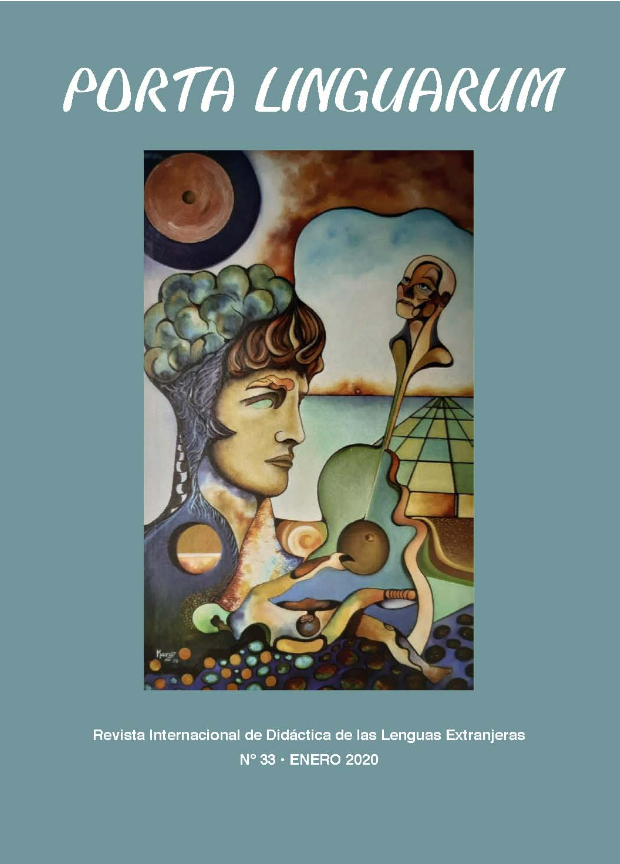Are Pre-Service Foreign Language Teachers Ready for CLIL in Catalonia? A Needs Analysis from Stakeholders’ Perspective
DOI:
https://doi.org/10.30827/portalin.vi33.26662Keywords:
CLIL, teacher education, CLIL teachers’ competences, training needs, needs analysisAbstract
Content and Language Integrated Learning (CLIL) is an educational approach that has been fostered as a way to increase students’ foreign language competence. However, its implementation has not always come along with the sufficient teacher training. This study aims to examine CLIL teachers’ competences and identify what training needs preservice language teachers have towards these competences. The participants of this study are pre-service primary and secondary foreign language teachers (n=44), CLIL teacher trainers, inspectors and CLIL coordinators (n=18). Peacock’s (2009) questionnaire is used to analyse pre-service teachers’ training needs towards language, self-reflection, methodological and classroom management competences. A semi-structured interview is used to elicit stake-holders’ perceptions towards CLIL teachers’ competences and training needs. The quantitative data shows that stakeholders believe that language, methodological and classroom management competences are equally necessary for a CLIL teacher. Apart from the initial domains analysed, participants consider that content knowledge and teamwork, interschool collaboration and material development competences are also relevant. In addition, training needs relative to these competences are found. However, considerable deep training needs for methodology and foreign language competence are identified. The findings have implications for CLIL teacher education.
Downloads
References
Dalton-Puffer, C. (2011). Content-and-Language Integrated Learning: From Practice to Principles? Annual Review of Applied Linguistics, 31, 182–204. http://doi.org/10.1017/S0267190511000092
De Graaff, R. (2016). Foreword. Integrating Content and Language in Education: Best of Both worlds? In T. Nikula, E. Dafouz, P. Moore, & U. Smit (Eds.), Conceptualizing Integration in CLIL and Multilingual Education (pp.xiii-xvi). Multilingual Matters.
Durán, R., Beltrán, F, & Martínez, F. (2016). A contrastive analysis between novice and expert teachers’ perceptions of school bilingual programmes. Cultura y Educación, 28(4), 738-770, DOI: 10.1080/11356405.2016.1237339
Escobar, C. (2010). Pre-service CLIL teacher-education in Catalonia. Expert and novice practitioners teaching and thinking together. In D. Lasagabaster, & Y. Ruiz de Zarobe (Eds), CLIL in Spain: implementation, results and teacher training (pp.188-218). Newcastle: Cambridge Scholars.
Escobar, C. (Coord.) (2016). La Formació Inicial de Mestres a Catalunya en relació a l’Anglès: Estat de la Qüestió i Propostes de Futur. Barcelona: Programa de Millora i Innovació en la Formació de Mestres.
European Commission. (1995). White paper on education and training. Teaching and learning. Towards the learning society’. Brussels: European Commission.
Eurydice Network. (2017). Key data on Teaching Language at school in Europe. Brussels: Eurydice.
Fenwick, L., Humphrey, S., Quinn, M., & Endicott, M. (2014). Developing Deep Understanding about Language in Undergraduate Pre-service Teacher Programs through the Application of Knowledge. Australian Journal of Teacher Education, 39(1), 1-38 DOI: 10.14221/ajte.2014v39n1.4
Fernández, R., Pena-Díaz, C., García-Gómez, A., & Halbach, A. (2005). La implantación de proyectos educativos bilingües en la Comunidad de Madrid: las expectativas del profesorado antes de iniciar el proyecto. Porta Linguarum, 3, 161-173. Retrieved from: http://www.ugr.es/~portalin/articulos/PL_numero3/fernandez_proyectos%20bilingues.pdf
Glaser, B., & Strauss, A. (1967). The discovery of ground theory: strategies for qualitative research. Aldine Publishing Company.
Hillyard, S. (2011). First step in CLIL: training the teachers. Latin American Journal of Content & Language Integrated Learning, 4(2), 1-12, retrieved from: http://www.unifg.it/sites/default/files/allegatiparagrafo/20012014/hillyard_first_steps_in_clil_training_the_teachers.pdf
Lo, E., & Macaro, E. (2015). Getting used to content and language integrated learning: what can classroom interaction reveal. The Language Learning Journal, 43(3), 239-255, DOI:10.1080/09571736.2015.1053281
Lorenzo, F., Trujillo, F., & Vez, J.M. (2011). Educación bilingüe: integración de contenidos y segundas lenguas. Editorial Síntesis.
Marsh, D., Mehisto, P., Wolff, D., & Frigols-Martín, M.J. (2010). European framework for CLIL teacher education. A framework for the professional development of CLIL teachers’. European Centre for Modern Languages. Council of Europe.
Meyer, O., Coyle, D., Halbach, A., Shuck, K., Ting, T. (2015). A pluriliteracies approach to content and language integrated learning -mapping learner progressions in knowledge construction and meaning-making. Language, Culture and Curriculum, 28(1), 41-57, doi: 10.1080/07908318.2014.1000924
Nikula, T., Dafouz, E., Moore, P., Smit, U. (2016). Conceptualizing Integration in CLIL and Multilingual Education. Multilingual Matters.
Pavón-Vázquez, V., & Ellison, M. (2013). Examining teacher roles and competences in content and language integrated learning (CLIL). Linguarum Arena, 4, 65-78. Retrieve from: http://ler.letras.up.pt/uploads/ficheiros/12007.pdf
Peacock, M. (2009). The evaluation of foreign language-teacher education programmes. Language Teaching Research, 13(3) 259-278, DOI: 10.1177/1362168809104698
Pena-Díaz, C., & Porto-Requejo, M.D. (2008). Teachers’ beliefs in a CLIL education Project. Porta Linguarum, 10, 151-161. Retrieved from: http://digibug.ugr.es/bitstream/ 10481/31786/1/PenaDiaz.pdf
Pérez-Cañado, M.L. (2012). CLIL research in Europe: past, present and future. International Journal of Bilingual Education and bilingualism, 15(3) 315-341. http://dx.doi.org/10.1080/13670050.2011.630064
Pérez-Cañado, M.L. (2016). Teacher training needs for bilingual education: in-service teacher perceptions. International Journal of Bilingual Education and Bilingualism, 19(3), 266-295, DOI: 10.1080/13670050.2014.980778
Pistorio, M.I. (2009). Teacher training and competences for effective CLIL teaching in Argentina. Latin American Journal of Content & Language Integrated Learning, 2(2) 37-43. DOI:https://doi.org/10.5294/laclil.2009.2.2.14
Rossett, A. (2002). Training Needs Assessment (9th Edition). New Jersey: Educational Technology Publications.
Schön, D.A. (1987). Educating the reflective practitioner: toward a new design for teaching and learning in the profession. Jossey-Bass
Van Kampen, E., Admiraal, W., & Berry, A. (2018). Content and Language Integrated Learning in the Neatherlands: Teachers’ self-reported pedagogical practices. International Journal of Bilingual Education and Bilingualism, 21(2), 222-236, DOI: 10.1080/13670050.2016.1154004
Van Kampen, E., Meirink, J., Admiraal, W., & Berry, A. (2017). Do we all share the same goals for content and language integrated learning (CLIL)? Specialist and practitioner perceptions of ‘ideal’ CLIL pedagogies in the Netherlands. International Journal of Bilingual Education and Bilingualism, 1-18, DOI: 10.1080/13670050.2017.1411332



















